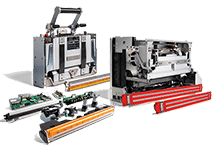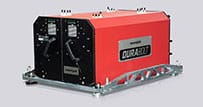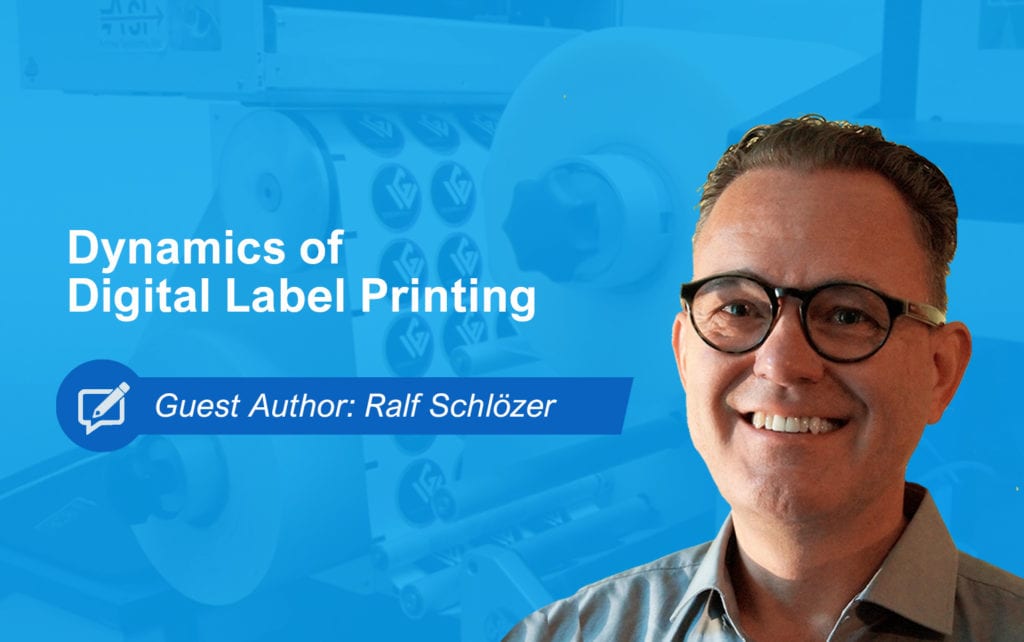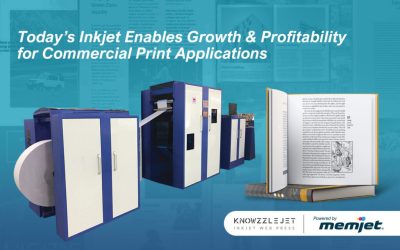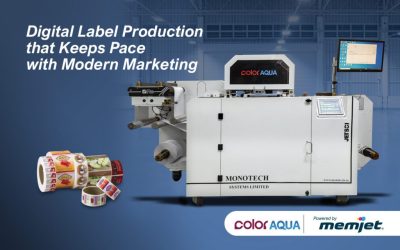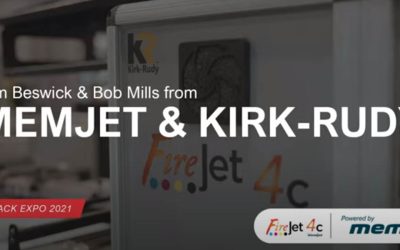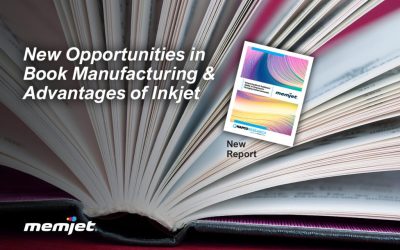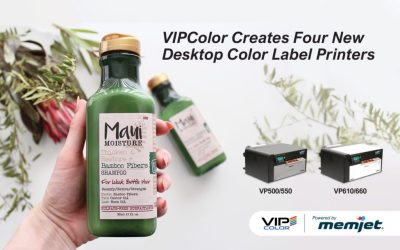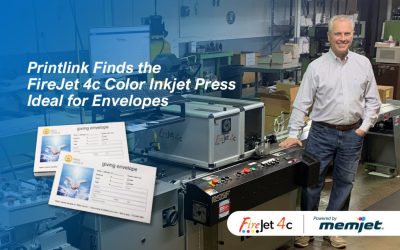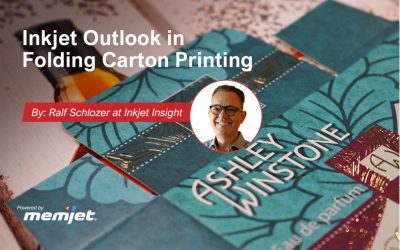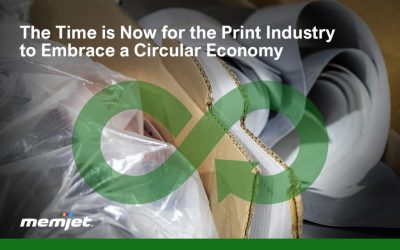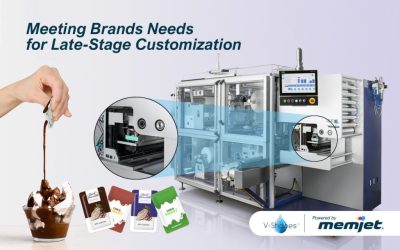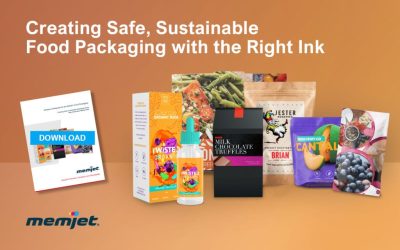By Ralf Schlozer, Print Analyst & Correspondent for Inkjet Insight
The trends in packaging production all play towards the strength of digital print: shorter runs, just-in-time production, more SKUs, customization, emerging micro-brands, and reduction of waste. The shift in demand for packaging has already been dramatic. In the Fespa 2018 print census, packaging printers stated that 32% of all jobs already require less than 100 m² of print and another 26% of jobs require less than 1,000 m². Yet label printing is the only market where digital print made the biggest impact so far, compared to folding carton, flexible packaging, and corrugated packaging. The reason is simple: labels are typically a small format – and this is where digital print excelled so far. Digitally printed labels moved from niche to mainstream and are set to grow further.
Label printing is not a monolithic market, however. Broadly speaking, we can distinguish between two types of labels: Primary and Secondary labels. Primary labels are usually found on products and the main purpose is to advertise and sell the product. Primary labels can include product information (and usually do), but the images are clearly promotional. Accordingly, color and print quality are important. Secondary labels are there to inform. They can contain warnings, information, instructions, and the like. They might be attached to products or other/outer packaging but could be used standalone as well (e.g. a COVID-19 warning sticker). Since they are there to inform, color and print quality (other than text legibility) are less important, although specialty signal colors and durability can become important.
Labels can be distinguished by the types of substrates as well. The main types are self-adhesive (or pressure-sensitive) and wet glue labels.nnSelf-adhesive labels are laminates made from a paper or non-paper face stock, adhesive, and a paper or filmic siliconized release liner. Printing is done on the face stock and then die-cut to a shape before the waste matrix is removed. Self-adhesive labels are typically supplied in reels, the release coating permits easy removal of the label from the protective backing liner. When self-adhesive was introduced about 30 years ago it was mainly for secondary labels and the print quality used to be lower, but now the quality caught up to wet glue.
Wet glue used to be the largest segment, but self-adhesive did not only surpass in revenues (61% of the global market in 2017 according to Smithers), but also in surface area printed (47.6%). More and more people are drawn to the flexibility self-adhesive allows when handling different shaped goods and the lower set-up costs. It also offers more flexibility in design, for example, think: clear labels, textures, odd shapes, and embellishments.
Wet glue labels accounted in 2017 for 36.4% of the label market by surface area printed according to Smithers, with only 19.8% of the revenue. Wet glue labels are typically printed sheet-fed, which requires a separate machine pass for each embellishment process, making multiple embellishments more complicated. In contrast, roll-fed self-adhesive equipment can produce the printing and embellishing inline.
Wet glue labels draw their attractiveness from cost: paper – as used in wet glue – is the least expensive substrate for labels. Self-adhesive labels – typically paper or film – are more expensive because they include the cost of the liner and the adhesive. However, as mentioned above, they are more flexible and easier to set up. Accordingly, self-adhesive is used for lower runs, while wet glue excels in very large runs. Today self-adhesive labels are used in most end-use applications but have its biggest advantage when using filmic materials (such as personal care products). Wet glue continues to have its prime use areas in bottle labeling and can labeling for foods.
There are some other types of labels as well. In-mold labels and sleeves are a bit off the typical range but are sometimes subsumed into labels as well. Both types require special substrates and processing skills to attach to the packaging. However, both types show good growth rates as brand owners strive for more striking labels. Tags and stickers are segments that are related to labels as well and offer more opportunities to broaden the application range.
The trend towards shorter runs, self-adhesive labels, and faster turnaround resulted in quick growth for digital label printing. Additionally, digital printing is opening opportunities for adding extra value through customization and even personalization of labels. Equally unique is the ability to print serial numbers or variable hidden information into images to allow track & trace or security features.
IT Strategies reckons that 5% of all pressure-sensitive labels are digitally printed and as premium products these already represent 15% of its revenue. Yet the label market is poised to continue to grow strongly. Keypoint Intelligence predicts the label market to grow from 2 billion m² in 2018 to almost 4 billion m² in 2023. This represents an average annual growth of 13.6%. Although the forecast was made before the COVID-19 crisis, rates should remain high, as label print was much less affected by the slowdown in print. IT strategies is a bit less bullish, predicting an annual growth of 8% in revenues from 2017 to 2021.
There are some things to keep in mind when investing in a digital inkjet label press. Labels are a very diverse market. Not all applications can be addressed with a single press, but the choice of the printer dictates how big the opportunity is. Inkjet label presses come in many shapes, sizes, and purposes. Several presses on the market take advantage of Memjet’s market-leading 1600 dpi print quality with specially formulated aqueous inks suited to food packaging applications.
- Arrow Systems ArrowJet Aqua 330R is a high-speed, aqueous pigment inkjet roll-to-roll print solution using Memjet DuraFlex® technology to deliver some of the highest production rates (up to 150 ft/min (45.7 m/min) and lowest print costs in digital narrow web label printing.
- Coaso iCueLabel 420 is a Memjet DuraFlex-powered roll-to-roll label printer producing high-quality labels— including food-safe and high-security labels — in a fast, affordable way.
- AstroNova QuickLabel QL-850 is a high-performance, wide-format label printer featuring NaturaTM food-safe inks and Memjet VersaPass® technology. Astronova also offers the T2-C high capacity, high volume tabletop label press capable of delivering precision over long runs on pre-die cut labels eliminating the need for a secondary finishing process.
- The VIPColor VP650 is also a desktop color label printer suited for tight spaces and using Memjet’s enhanced water resistant ink technology suitable for chilled food & beverages, and most moisture-exposed products.
Opportunities in Several Label Markets
Self-adhesive labels have driven the market so far and will continue to show some more growth. In-mold labels and sleeves offer even higher growth rates. Adjacent application areas such as tags and stickers offer additional opportunities. Accordingly, flexibility is key to addressing a wide range of applications. This is mirrored in the wide range of print solutions available, especially in inkjet. Inkjet is also crucial in the digital embellishment processes which help marketers to create stand-out labels. Thorough research is needed into which label markets are in scope and which presses are the best fit. Moreover, the label market is getting more diverse, as brands try to differentiate and the ability to upgrade and grow the print system should be an important consideration.
Learn more about Powered by Memjet print solutions for the label market.
This article was originally published on InkjetInsight.com. Ralf Schlozer is an independent Print Analyst at digitalprintexpert.de in Berlin, Germany. He covers European inkjet markets and technology for Inkjet Insight and is the European Editor for WhatTheyThink.com


